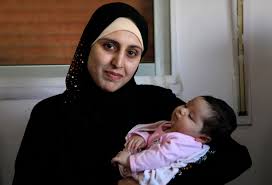 On Sunday, we launched Responding to Refugees with Allison Duvall For Individuals and For Groups. Allison’s class teaches people who want to learn about how to support refugees who resettle in our communities. It is not hard to find statistics concerning the current global refugee crisis, one of the worst since World War II. From Syria alone, 4.4 million people from have applied for refugee status, or have received it, while 6.6 million more people have been displaced and are struggling to survive within Syria.
On Sunday, we launched Responding to Refugees with Allison Duvall For Individuals and For Groups. Allison’s class teaches people who want to learn about how to support refugees who resettle in our communities. It is not hard to find statistics concerning the current global refugee crisis, one of the worst since World War II. From Syria alone, 4.4 million people from have applied for refugee status, or have received it, while 6.6 million more people have been displaced and are struggling to survive within Syria.
In a strange way, the very magnitude of the current refugee crisis can  make it hard to comprehend. Numbers like these become too big. The tragedy becomes unfathomable. Emotionally, we cannot manage suffering on that range; we turn off our emotions to protect ourselves from too much sorrow. But each number represents a person. Each person has a story. Whether or not refugee assistance is your choice of ministry, we believe that God wants us to pray for and feel for the Syrian refugees and indeed for all refugees as human beings. In order to do so, it helps to see their pictures and hear their stories — not as part of a promotion or political campaign, but simply because these people matter to God and should matter to us.
make it hard to comprehend. Numbers like these become too big. The tragedy becomes unfathomable. Emotionally, we cannot manage suffering on that range; we turn off our emotions to protect ourselves from too much sorrow. But each number represents a person. Each person has a story. Whether or not refugee assistance is your choice of ministry, we believe that God wants us to pray for and feel for the Syrian refugees and indeed for all refugees as human beings. In order to do so, it helps to see their pictures and hear their stories — not as part of a promotion or political campaign, but simply because these people matter to God and should matter to us.
 Here are a couple of resources that can help introduce you to individual refugees and their stories. Humans of New York did an amazing series a few months ago from September 26 through October 6. This series follows the usual pattern of the Humans of New York blog, providing moving or interesting photographs of people — in this case, Syrian refugees — along with short paragraphs quoting the subjects of the photographs or telling their stories. I encourage you to go to this website’s archive and find September and October (or just click here for September and here for October.) The Washington Post also did a terrific series along similar lines called Refuge. A writer and photographer went to Turkey, Jordan, and Lebanon, took photos, and told stories — in this case, multiple photographs of the same people and longer stories. The photographs are moving, and the writing is excellent.
Here are a couple of resources that can help introduce you to individual refugees and their stories. Humans of New York did an amazing series a few months ago from September 26 through October 6. This series follows the usual pattern of the Humans of New York blog, providing moving or interesting photographs of people — in this case, Syrian refugees — along with short paragraphs quoting the subjects of the photographs or telling their stories. I encourage you to go to this website’s archive and find September and October (or just click here for September and here for October.) The Washington Post also did a terrific series along similar lines called Refuge. A writer and photographer went to Turkey, Jordan, and Lebanon, took photos, and told stories — in this case, multiple photographs of the same people and longer stories. The photographs are moving, and the writing is excellent.
Look at these people. Read their stories. Don’t do too many at once — just a few. After too many images, people start to detach from the emotional impact of the imagery. Keep these refugees people in your mind by only considering a few at once. We hope that you will take this opportunity to see the faces of these refugees so that we may pray for them as fellow children of God rather than as anonymous numbers.
If, as you pray and discern, you become interested in learning more about how to help refugees, please look at this preview for Responding to Refugees with Allison Duvall.

